The 2025 Ducati Panigale V4 Is The Ultimate Race Bike For The Road
Meet the superlative superbike.
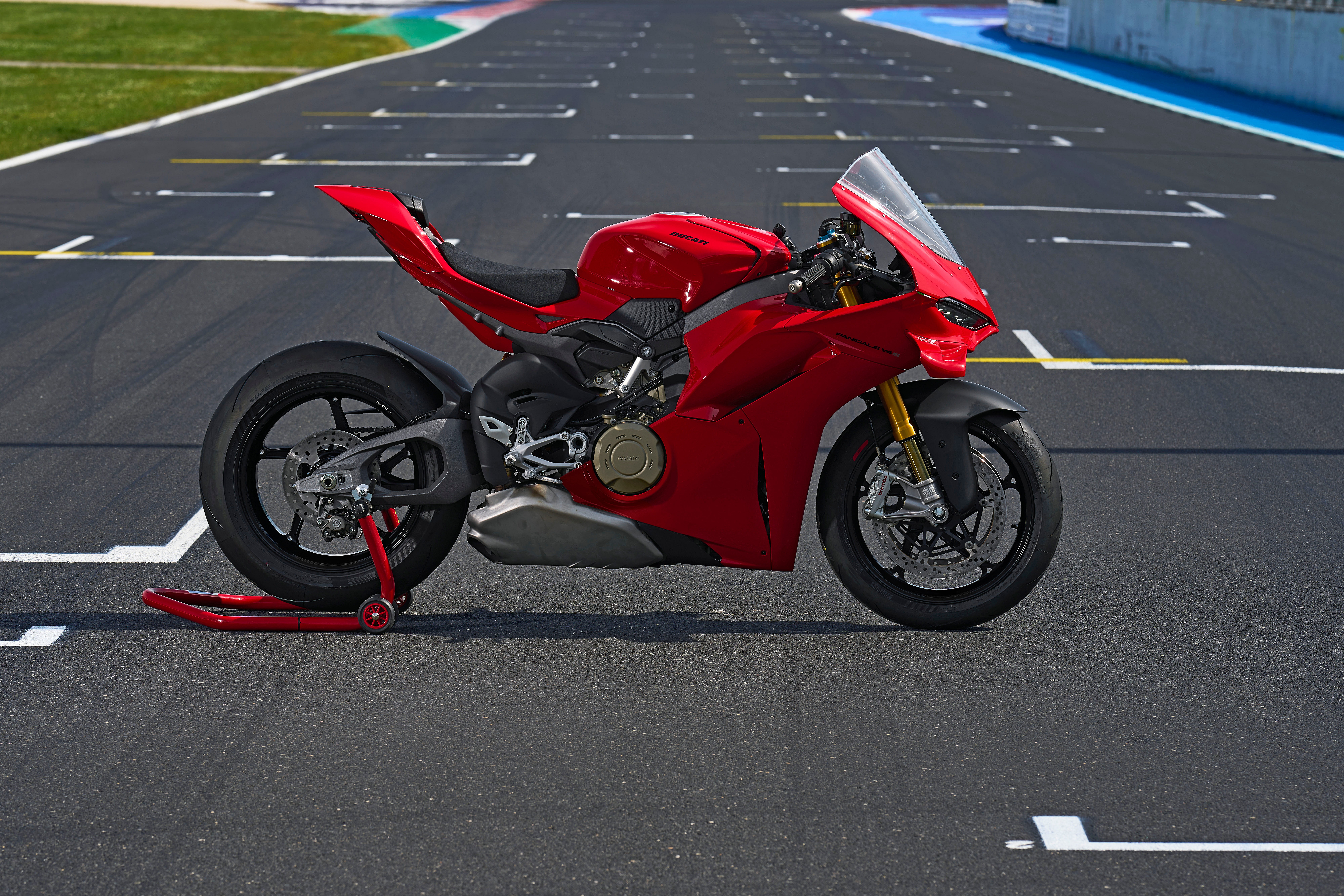
The previous-gen Ducati Panigale V4 already verged on perfection. Its 1,103-cc “Desmosedici” V4 engine—so named for the desmodromic valve-timing system first implemented by Ducati in the 1950s to achieve more uniform power delivery—was developed from a prototypical race-only MotoGP powerplant. At the hands of rider Álvaro Bautista, the Panigale V4 has won the past two titles in the Superbike World Championship, the pinnacle competition series for production street bikes. It’s the two-wheeled equivalent of a Ferrari SF90 Stradale—a thoroughly race-bred machine that will test your ability at a track and then carry you home on public roads. In late July, Ducati announced the new seventh-generation Panigale V4. And the early consensus is that, even with a seemingly immaculate pedigree, the superbike has somehow gotten even better.
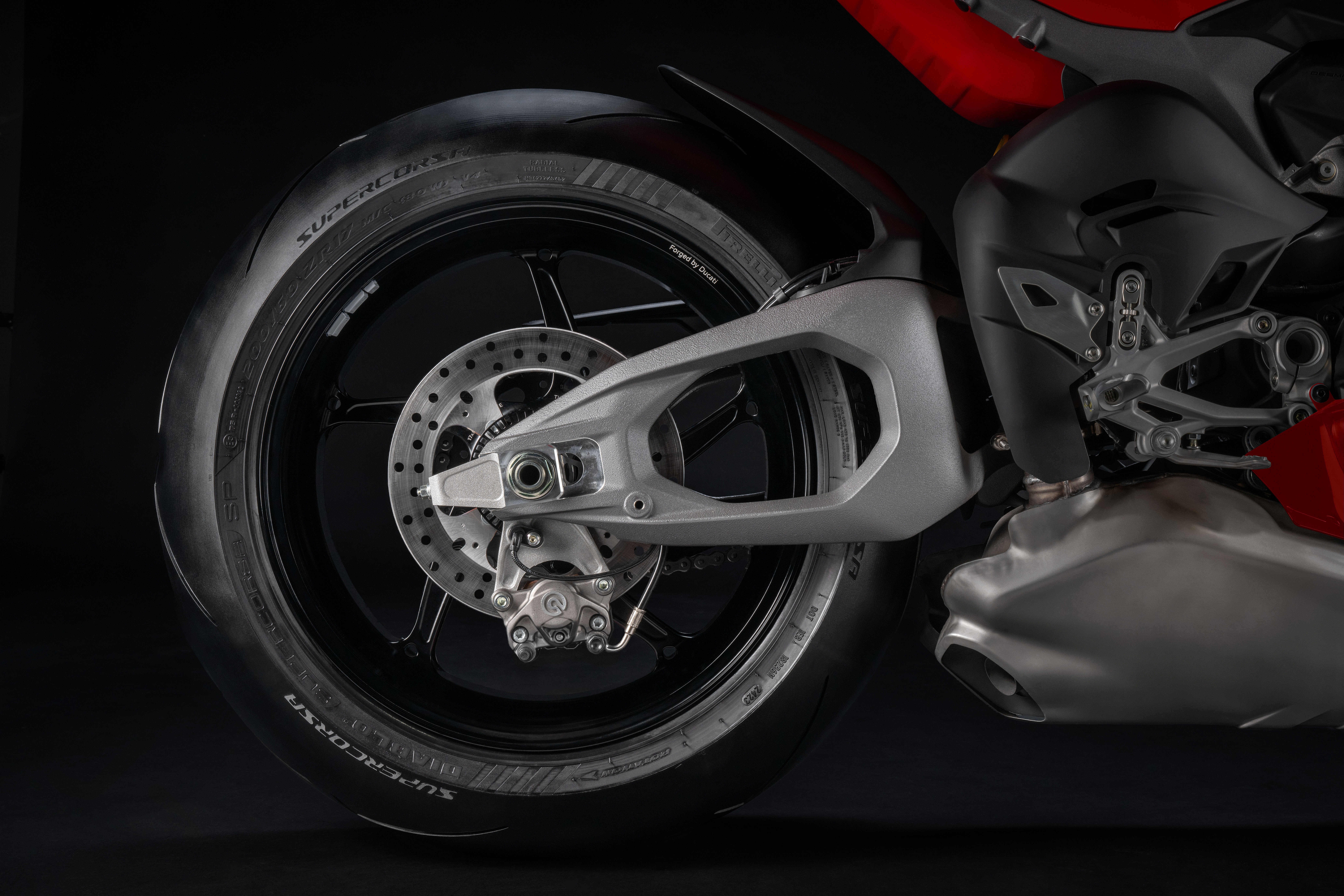
“Ducati’s mission is to enrich people’s lives through technologically sophisticated motorcycles characterized by sensual beauty,” declared Ducati CEO Claudio Domenicali when presenting the bike during the Ducati World Première. “The new Panigale V4 continues a history of successes and unforgettable models, which represents the maximum expression of our values of style, sophistication and performance.”
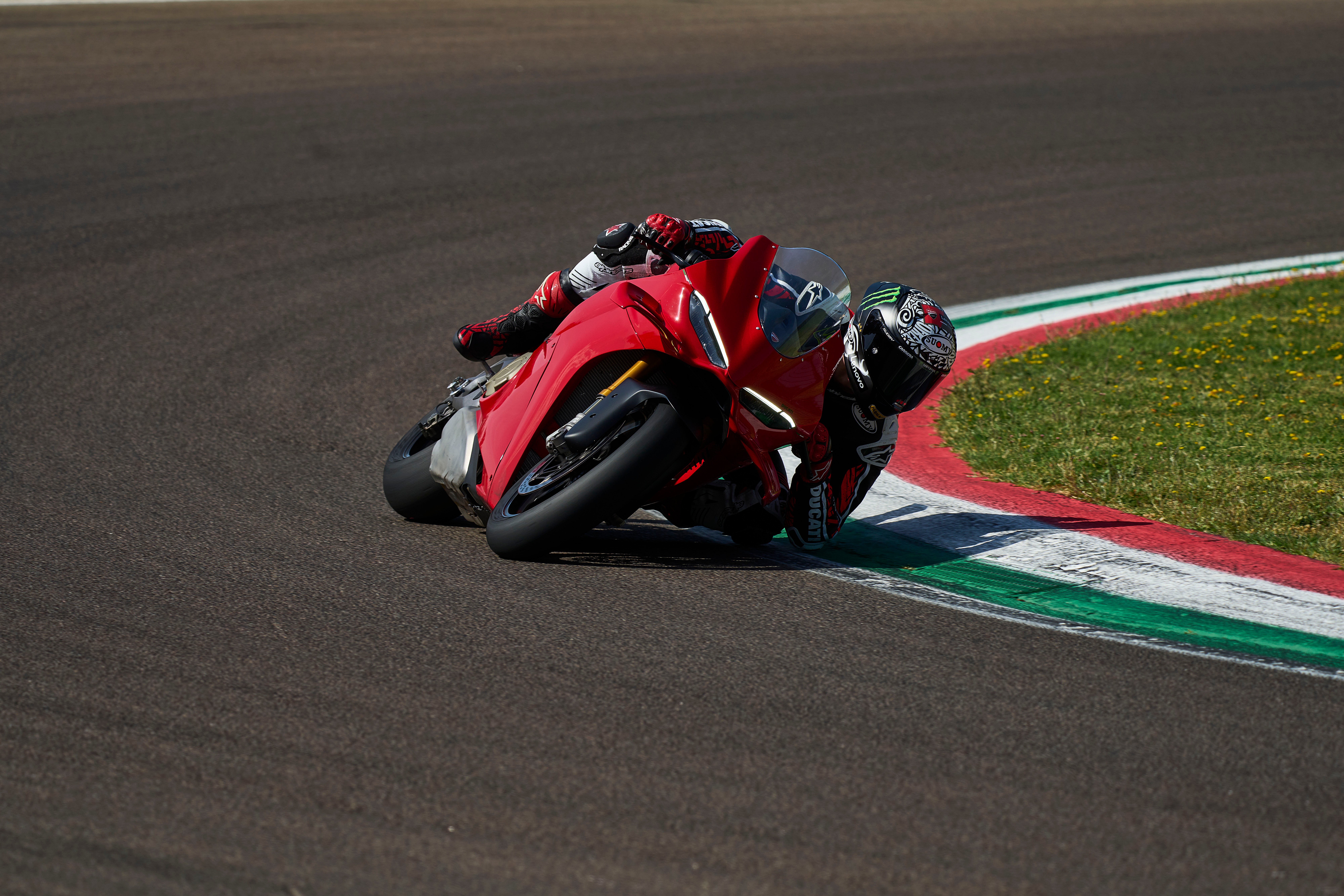
This is the first Ducati in 30 years to employ a double-sided swingarm, which is arguably the most substantial change when compared to the preceding Panigale V4’s single-sided swingarm. There was something undeniably cool about seeing the rear wheel almost float in the space beneath the tail when viewing the old model on its throttle side, but as the RideApart site points out, MotoGP bikes employ double-sided swingarms in pursuit of ultimate performance because, among other reasons, they’re lighter. Indeed, this new Ducati Hollow Symmetrical Swingarm, connected to MotoGP-derived suspension linkages, helps shed 8.4 pounds off the rear. Thanks to the weight loss and a 37-percent decrease in lateral stiffness, the new swingarm should improve traction when exiting corners and increase feel under acceleration.
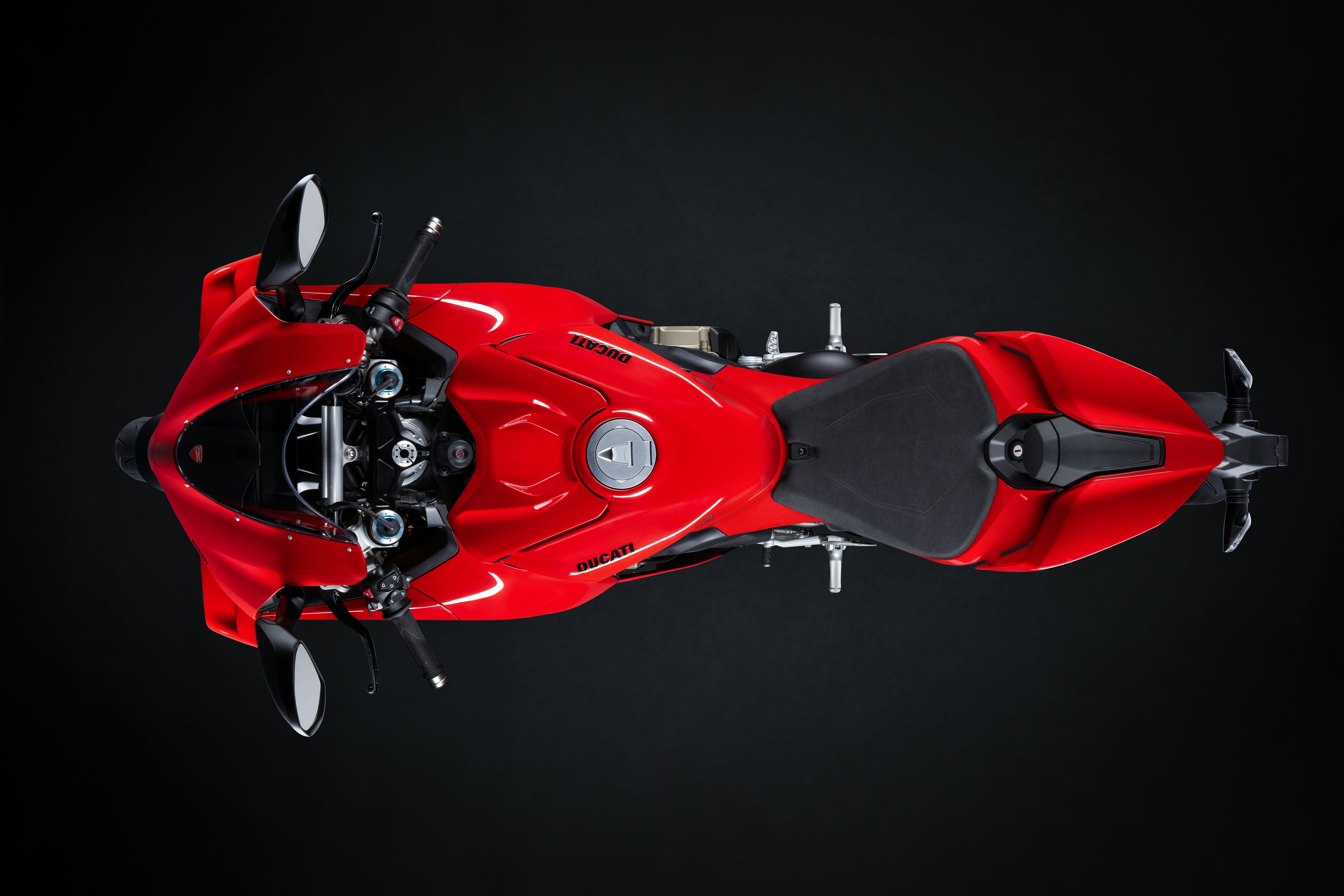
While the swingarm’s performance benefits may be obvious, many are contending that aesthetic value has suffered. Perhaps Ducati anticipated this gripe, as press materials cite the Ducati 916—widely praised for being one of the most beautiful motorcycles ever—as having inspired the new Panigale V4’s design. The similarities can best be seen in profile, where the balanced horizontal line, created by raising the Panigale V4’s front and lowering its rear, becomes most apparent. The rear-view mirror supports were mounted inside the fairing to further accentuate this line, while the rear LED unit’s “double C” shape and narrow tank are two more elements evocative of the 916.
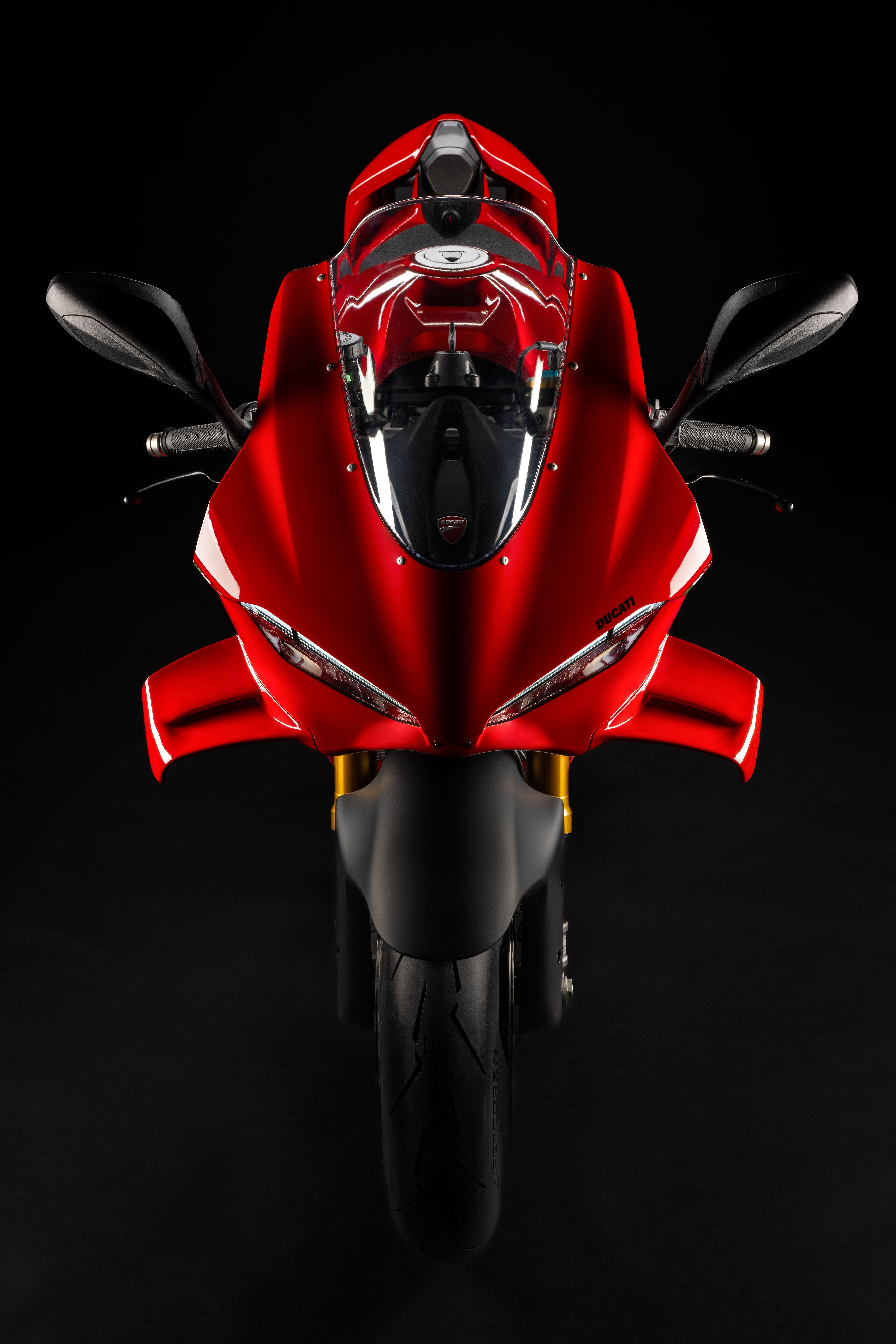
The powertrain has also been improved—the base Panigale V4’s standard alternator, oil pump and gearbox drum come from the hardest-core performance-minded variants of the previous Panigale. Most of the engine remains largely unchanged; it’s still a stressed element of the chassis, and it’s got four camshafts that move 16 valves. The U.S. version’s power output changes negligibly, with a peak 209 horsepower coming at 12,750 rpm and 89.5 pound-feet of torque at 11,250 rpm. However, several new pieces of MotoGP-inspired componentry have been brought aboard, one of which is Ducati Vehicle Observer. According to Ducati, this algorithm “is able to evaluate a high number of kinematic and dynamic parameters that influence bike behavior and calculate acceleration, forces on the tires and the maximum torque that the vehicle can support.” This capability further enhances the Panigale V4’s comprehensive rider-aid suite, which includes traction control, slide control, wheelie control, launch control and engine brake control.
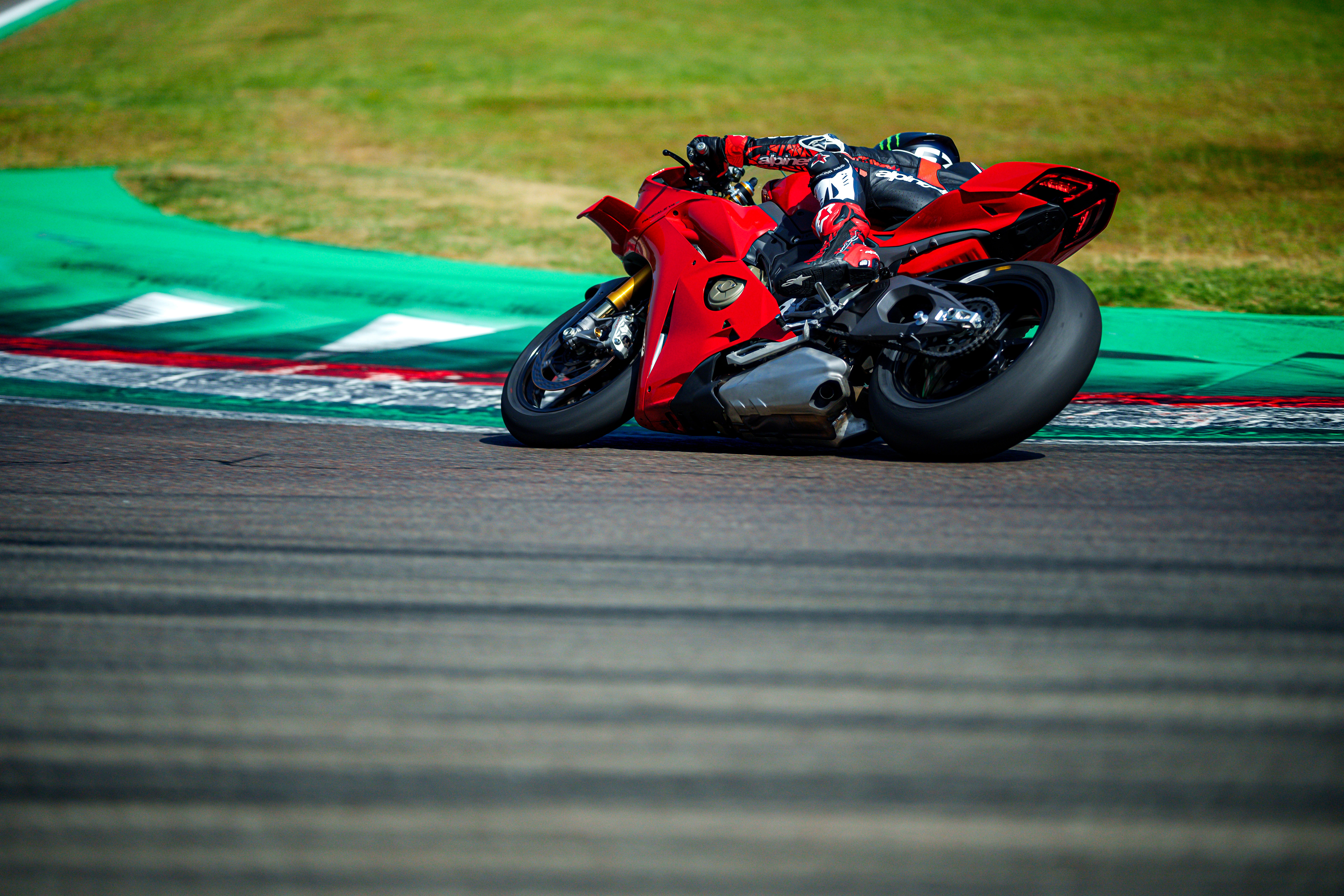
The all-new dashboard is also lifted straight from Francesco Bagnaia and Enea Bastianini’s MotoGP bikes. The 6.9-inch screen, which was optically bonded to ensure readability in all conditions, features a “Track” display that shows a series of new parameters. Among them are “g-Meter,” which indicates the g-force value when leaning, accelerating and braking; “Power & Torque,” which displays the percentage of power and torque delivered in any given moment; and “Lean Angle,” which shows the instantaneous lean angles alongside the throttle level and the pressure exerted on the brakes. A time-split table, with T1, T2 and T3 icons indicating the performance obtained in different sectors of a track, uses the same white, gray, orange, and red colors seen in MotoGP.
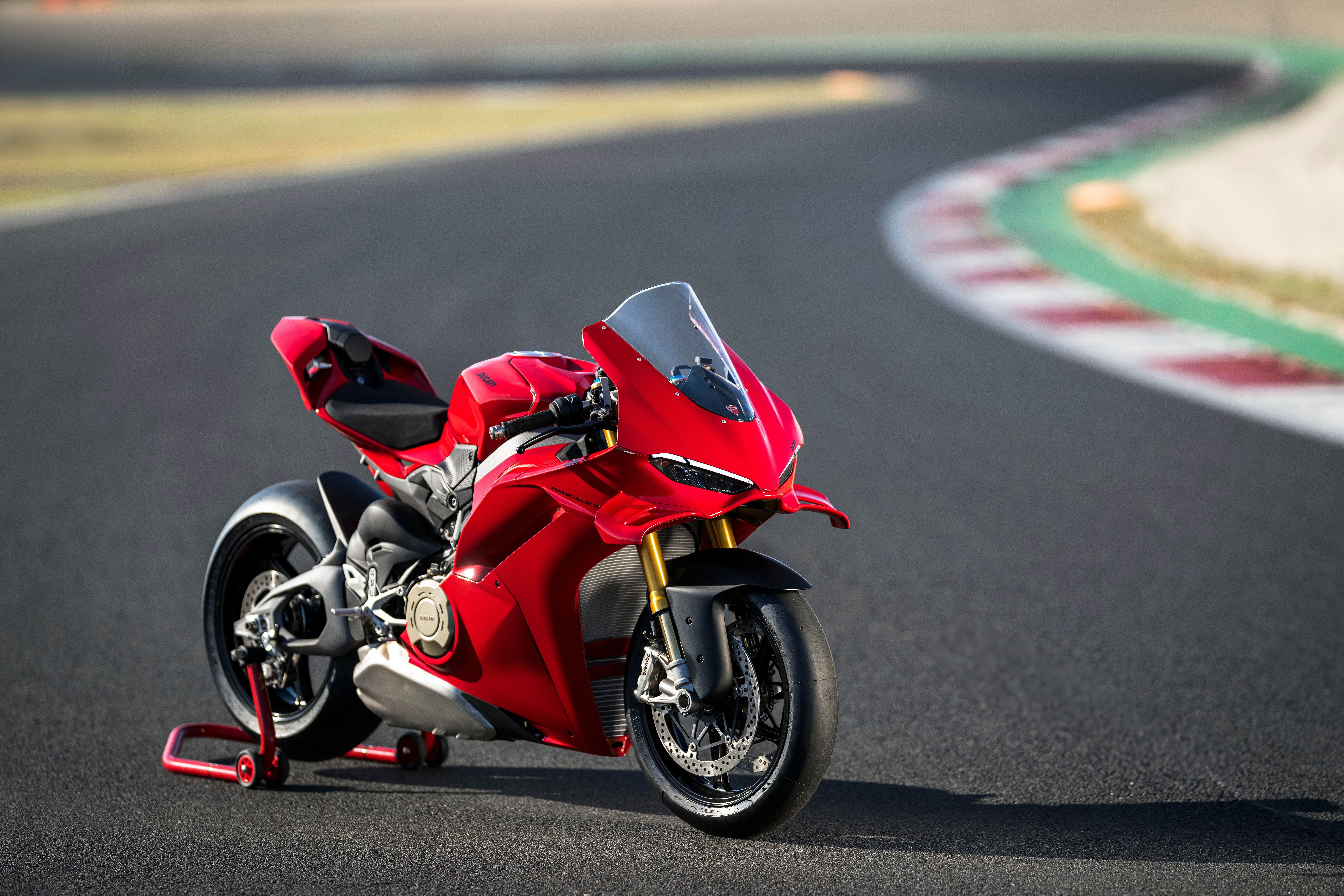
Perhaps the single most promising piece of data provided by Ducati is that the Panigale V4, priced at $25,995, is one second quicker than the outgoing model around the company’s test track. And that’s just the base bike: For $33,895, the Panigale V4S offers even racier features, like lighter alloy wheels and an upgraded electronically controlled Öhlins NPX/TTX suspension, ensuring more milliseconds will be dropped from lap times. The next-generation Panigale V4R, the ultimate expression of the Ducati Corse racing program in a road bike, will likely be announced at some point in the near future. Who knows? This generation of Ducati Panigale V4 just might bring about superbike perfection
